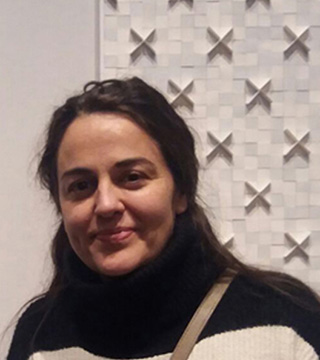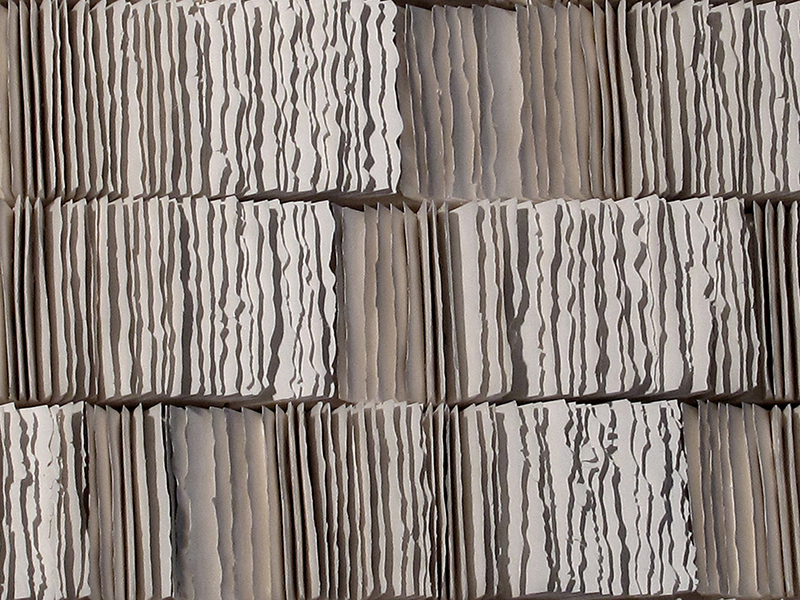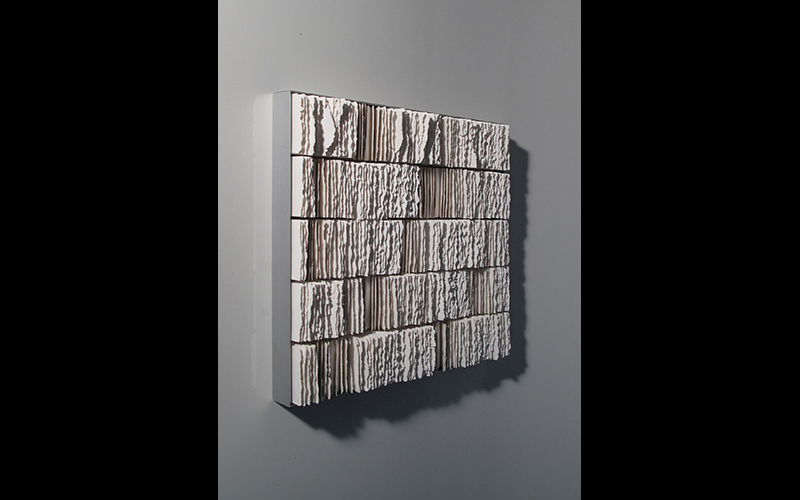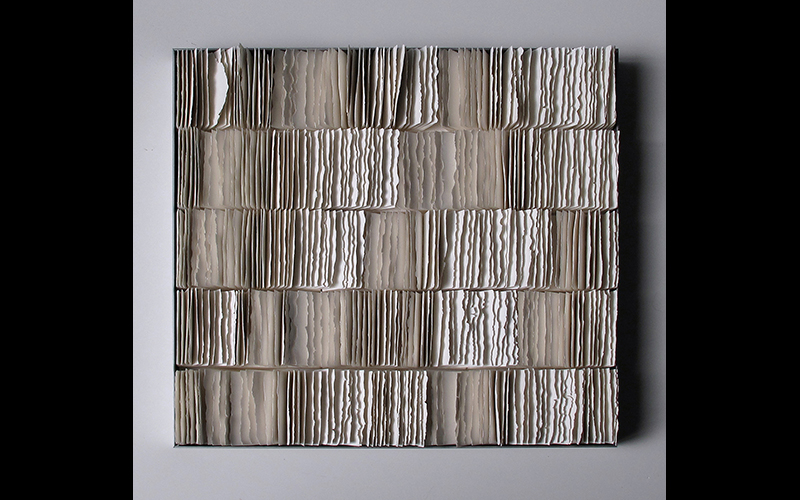
Myriam Jiménez
Artist's Work
Mirage
Work introduction
Apart from the different series in which I structure my work, there are
principally two big and evident divisions. On the one hand there are the
pieces where I work with vegetable elements (gardens, scales …) and for
other one what we might be call architectures (interior spaces, cities …)
In all of them there is a clear inclination towards the geometric forms
where across mathematical and rational concepts I submit them to criteria
of order, pace and sequence.
In turn the use of the white color is vital in my work as synthesis of all the
colors and symbol of the absolute thing. The white bodies give us the idea
of purity and modesty, believe a luminous impression of empty, positive
infinite.
In the series "Mirages" I play with the juxtaposition of thin slabs of
porcelain where the movement of the same ones, together with the effect
that the lights and the shades produce, they are vital to create this
mysterious atmosphere that precedes a mirage. I usually work with
graphical designs that are interesting or attractive for their pace,
symmetry, geometry … and that are in our daily landscape.
Artist Biography
She began her artistic training in 1994 in Madrid at the Francisco Alcántara School of
Art. In 1999 she moved to Valencia to attend Enric Mestre’s ceramic sculpture
monograph. Since then she works in her own workshop in Torrent. Since 2019 belongs
to the International Academy of Ceramic (AIC-IAC).
Among the prizes she has won are the President Prize of the Valencian Government at
the VII International Biennale of Ceramics of Manises. Valencia. Pujol i Bausis Prize at
the 14th Bienal de Cerámica d’Esplugues Angelina Alós. Barcelana. Prize l’Alcora in the
27th International Ceramic Competition of Alcora. Castellón. President Prize of the
Valencian Government. VIII International Biennial of Ceramics of Manises. Valencia.
She has participated in numerous exhibitions both nationally and internationally. Some
of the most important are Pentik Museum. Posio. Finland (2001), Taso-Tuen Exhibition
Center in Caotun, Taiwan, Kaoshiung Municipal Museum of Fine Arts, Taiwan (2005 ),
KUNST.WERKSTATT der Gmundener Keramik. Austria (2006), Freihof Sulz Gallery.
Vorarlberg. Austria, Keramikmuseum Westerwald, Höhr-Grenzhausen. Germany
(2007), International Biennial of Contemporary Ceramics of Vallauris. France, Gallery
Hélène Porée. Paris. France, Onomachi Shopping Centre. Wakayama. Japan, Galerie im
Kulturzentrum Kapfenberg. Austria. Palau de la Música. Valencia (2008), Museé du
Prieuré. Charolles. France (2009), Espacio Vital Ademuz Espai d’Art. Corte Inglés
Ademuz. Valencia, Tiempo de Flores Festival Miradas de Mujer. Coll Blanc Gallery.
Culla (2014), [EssencialË Universidad Jaume I de Castellón, a School of Ceramists, Casa
del Cable, Jávea, and Mision Ceramistas, Galeria Hachi. Wakayama. Japan, 5 Years
Ceramic Symposium Memory. Maison des Arts du Belvédère. Tunisia (2015), Freiderike
Zeit Galerie. Deidesheim. Germany, SEMILLAS Coll Blanc Espai d’art. Culla. Castellón,
FUERA DE SERIE. Museo Nacional de Cerámica González Martí. Valencia, Ceramics
Applied to Architecture. Museu del Disseny de Barcelona (2016)…
- About UsIntroduction to the MuseumSpeech by curatorManagement TeamLeadership CareServiceContact Us
- NewsDomestic NewsInternational News
- Exhibition OnlineCurrent ExhibitionExhibition ReviewCollections
- Artists' lecture hallLive OnlinePast Review
- Appreciation & CollectionAppreciationOnline AuctionOnline Transaction
- CooperationCooperation PartnersCeramic BankDigital AssetsIPRBusiness Cooperation

WeChat Official Account

Weibo QR Code
Phone:010-84015509
Fax:010-84015509
Email:xinpindao@bj-yy.com
Address: First Floor, Pingan Mansion, No. 100, Dongsi Shitiao, Dongcheng District, Beijing.
© 2001-2023 guozhongtaoci
build:xinocheng




.jpg)